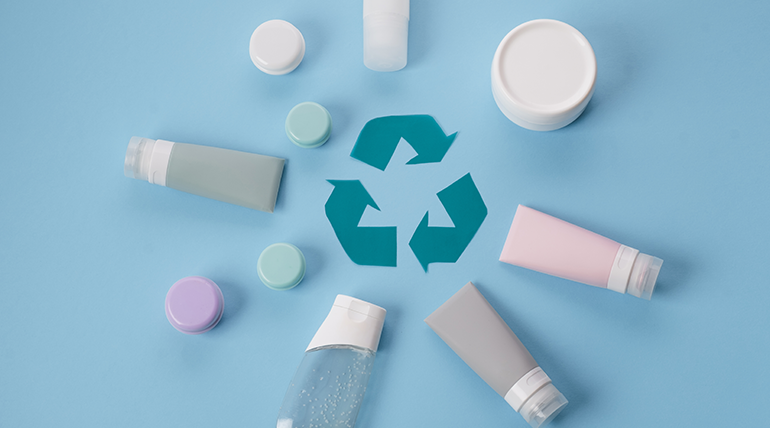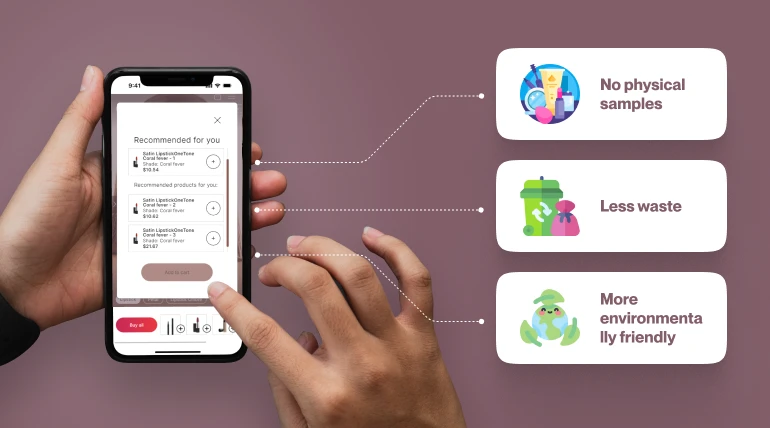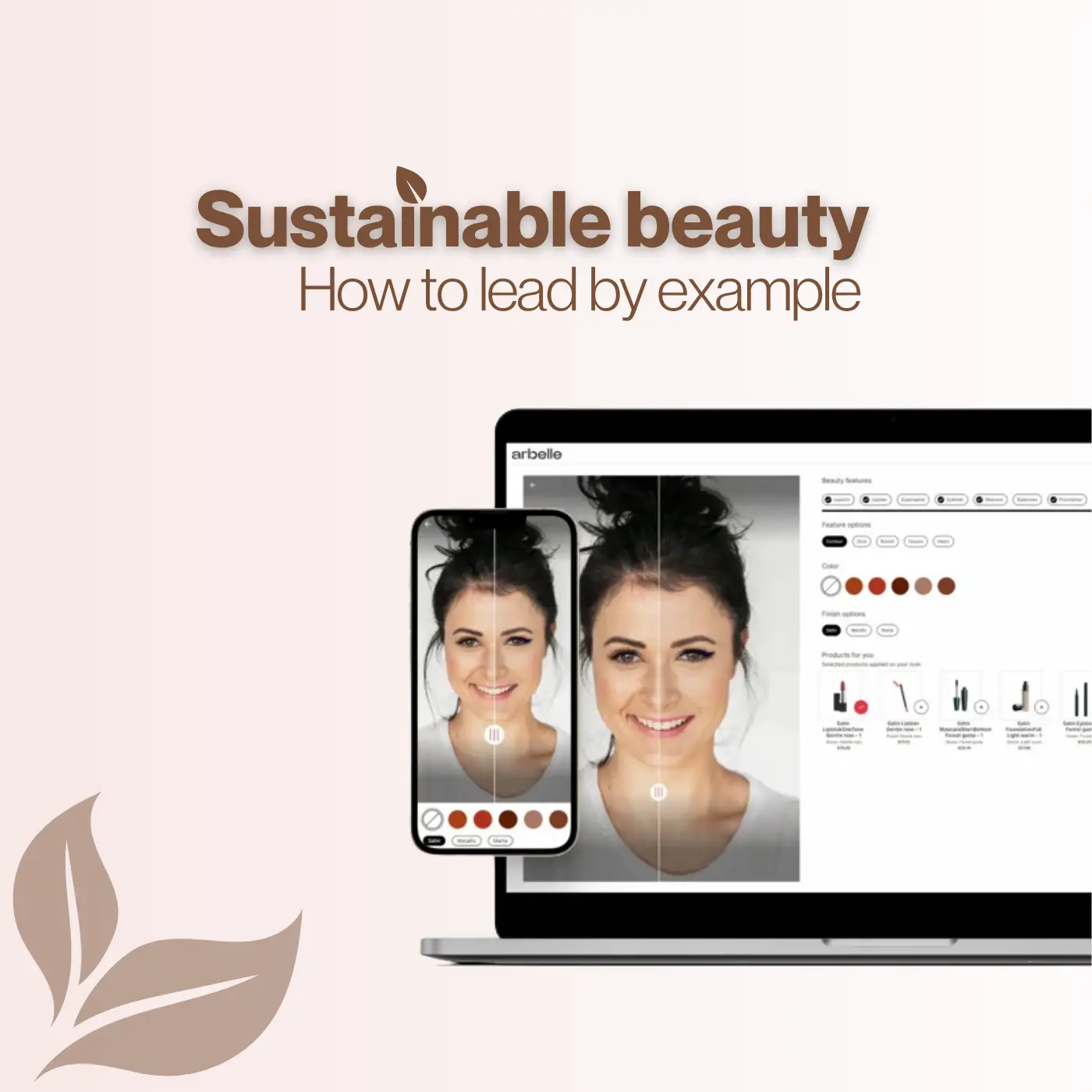Beauty brands often market themselves as clean, but they have a dirty secret. They produce over 120 billion units of packaging annually, or 15 pieces of cosmetic waste for every person on Earth. This leads to the loss of 18 million acres of forest each year, an area almost as large as Ireland.
And packaging is only part of the problem. From the sourcing of raw materials to the disposal of products, every stage of a cosmetic’s lifecycle leaves a mark on our planet.
The good news? Many brands, big and small, are stepping up. Giants like L’Oréal and Garnier are leading the charge with ambitious sustainability goals. This isn’t happening by accident — it’s a response driven by consumers who demand more from the brands they love.
In fact, 60% of consumers are willing to change their shopping habits to reduce their environmental impact and a whopping 80% say cosmetics sustainability is important to them. ( POSITIVE+)
This is part of broader trends in the makeup industry that include thrifting, veganism, cruelty-free products, and a growing rejection of fast fashion. People are waking up to the impact their choices have on the planet, and they’re voting with their wallets.
As a beauty brand, you’re now in a position to lead by example. You’re no longer selling a product, you’re selling a purpose. It’s becoming clear that sustainable beauty is no longer optional, it’s a key driver of loyalty and success.

Key takeaways:
- The beauty industry generates 120B+ packaging waste yearly, driving deforestation.
- Consumers demand change – 60% prioritize sustainability, 80% value eco-conscious beauty.
- Brands are rethinking sourcing – using ethical ingredients, reducing water waste, and cutting carbon footprints with local suppliers and eco-friendly transport.
- Beauty AR tech cuts waste by replacing testers, reducing returns, and enabling smarter shopping.
- Virtual try-ons boost sales – Sephora saw a 35% conversion increase.
- Sustainable beauty isn’t optional – it’s a key to brand loyalty and success.
Manufacturing: Starting at the source
It all begins with what goes into your products. Sustainable ingredients are those that are ethically sourced, have a minimal environmental impact, and support biodiversity.
For example, Garnier uses naturally sourced ingredients such as South African bee wax, Hungarian acacia honey, and Aloe vera from Mexico. This year, they’ve pledged to support 800 communities worldwide through fair trade practices.

Water, a precious resource we often take for granted, is heavily used to produce makeup. L’Oréal is implementing waterloop factories that recycle water internally and aims to substitute all conventional plants until 2030.
Distribution
The distribution phase is where many brands overlook cosmetics sustainability. Each step of the transportation chain, from raw material to the final product on the shelves, adds to the carbon footprint.
Companies have started sourcing ingredients locally and are turning to lower-emission transport and reducing package weight.
The consumer use phase
Changing the way consumers use and dispose of products is key to driving sustainable beauty.
Encouraging responsible usage through refillable containers, or using biodegradable packaging, can make a significant difference. Companies like Lush and Fenty Beauty are leading the pack with refillable products and recyclable components, reducing waste at the post-use phase.
Consumers are thrilled about this. One of them said:
“I love the idea of bringing back old and empty containers to be recycled and used again. I love refills, especially for eyeshadows, and putting them in a bigger, empty cardboard magnetic palette. Much less waste.”
➥ Quality over quantity
Once the product reaches the consumer, the focus shifts to usability and longevity.
High-quality products that last longer are more sustainable than cheap, short-lived alternatives.
Another consumer jokes:
“I’ve been married almost 16 years and I definitely still have at least one eye shadow palette that I bought at the airport going on my honeymoon. As long as they aren’t funky, I’m not going to ditch them when they’re still usable.”
How beauty AR drives cosmetics sustainability
All those testers at stores that get tossed after one use add up to a lot of waste. Here’s where beauty tech steps into the picture. With virtual try-ons, consumers can test 50 shades of lipstick without messy swatches and tiny plastic tubes heading straight to the landfill.
And it’s not just testers. Think about all the packaging for samples and promo products — plastic, paper, more plastic. Instead of handing out physical freebies, you can let consumers “try” products digitally. No wrapping, no shipping, no guilt. Plus, fewer returns because with AR, what you see is (way closer to) what you get.
➥ Beauty AR in the real world
Virtual try-ons can lead to a 2.4x increase in purchase likelihood. Sephora has seen a 35% increase in conversions after adopting virtual try-ons. Ulta has implemented it on their mobile and web app, letting users try on foundation, lipstick, hair colors, and even fake lashes.
No more double-dipping into communal testers (gross) or ending up with unused products. It’s a win-win: consumers get their perfect product, and the planet gets fewer tossed-out products.
➥ Personalized products = less waste
AR isn’t just fun. It’s informative. You can use data from virtual try-ons to figure out what consumers actually like and personalize their shopping experience. That means fewer “meh” products sitting unused in drawers and less overproduction of stuff nobody buys.
At Arbelle, we’re proud that our cutting-edge makeup AR is already making beauty shopping way greener.

Final thoughts
So there you have it: the beauty industry’s dirty secret is starting to get cleaned up.
You’re now in a position to not only meet the growing demand for sustainable beauty but to be part of the solution.
Consumers are ready to support brands that prioritize the planet. And with tools like AR and smarter manufacturing, you can play a major role in creating a greener, more responsible industry.
Discover our beauty AR tools
How can our beauty AR solutions boost your business and suistainability practices? Contact us and we’ll tell you all about it.
